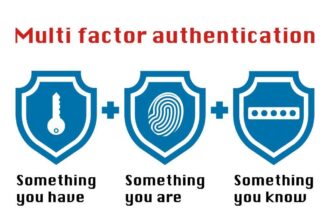When it comes to ways of keeping your network safe, you need to have an intrusion prevention and detection service. Without these services, you are likely going to find out that there is a problem within your network, when it is too late. You need to be on the lookout at all times, but if you were to do it manually, you would not have time for anything else.
When it comes to ways of keeping your network safe, you need to have an intrusion prevention and detection service. Without these services, you are likely going to find out that there is a problem within your network, when it is too late. You need to be on the lookout at all times, but if you were to do it manually, you would not have time for anything else. Getting a service that can perform these tasks for you can make your life easier and more efficient.
You Can Control What Traffic Goes In or Out of Your Network
When you are seeking ways of controlling your network’s security, you need to be able to push the traffic that your network has through the proper channels to make sure it is all safe. There are two ways to go about this. If you are simply looking for IDS, which is intrusion detection services, then what you want to do is have the devices working out of the direct line of your traffic flow so that you can detect abnormalities on different scales. However, if your focus is on IPS, which is intrusion prevention services, then you want to put the device that is sorting through your traffic in line with your network so that it can be the barrier your network needs to stay safe.
From there, you can go through each type of traffic that your network has, and pick and choose which streams of traffic you want to keep an eye on, and which should be safe left alone. The only thing you are going to have to concern yourself with once you have your system set up and monitoring the right flows of traffic, is keeping the device you are using consistently updated. The database that your device runs on is going to need regular updating, as it cannot protect you against intrusions that it is not aware of.
You Can Evaluate the Level of Risk Based on Rating Your Network
Another reason to make sure that you are using intrusion prevention and detection systems is because they can help you evaluate just how much of a risk your network really is. If you start to have traffic coming back with problems, your device will then work to determine just how at risk your network is at, as a whole. Some of the different streams that are used for intrusion pose a larger threat than others, and this is worked into the device itself that you are using. Your device will detect the intrusion, figure out what type of intrusion it is, and evaluate the information that it can get from the intrusion. From there, you will be able to get a rating as to just how much potential danger your network is in, and decide on what type of steps you want to take next, such as blocking that type of intrusion, shunning the intruder, or dropping the packet of information altogether.
Making Your Network Stronger through Increased Intelligence
The more intrusions you are able to prevent and detect, the stronger your network is going to become. Your device will begin to seek out the types of intrusions it sees most frequently, and it will adjust itself to be able to keep you safer. In essence, getting IPS and IDS allows your device to learn what your network does and how intrusions come through, so it can go from being on the offensive to intrusions, to being on the defensive side of things. Plus, the more intrusions your device detects, the more that the system is able to update other devices to keep those intrusions out of everyone’s network, so you are helping others and they are, in turn, helping you. With the consistent updates, both device and programmers are able to provide a higher level of protection than they would be without the information being relayed back and forth.
Get a Block Directly to Your Threats More Quickly
By using an intrusion prevention and detection service, you are also able to keep the threats that you do face to a minimum because the service will be able to respond more quickly to anything that comes up to cause issues. As the service learns what the newest threats are, it is more readily able to detect a threat before it poses an actual problem, leaving your system in a state of vulnerability for much less time. The faster your device is able to respond to any threat to your network, the less likely you are to face any type of data loss or compromise due to the intrusion. Keeping your device consistently updated also allows for a quicker response as well, keeping your business as safe as possible.
Cater Your Device to the Threats You Receive Most Often
A great thing about having a device that can help you with both prevention and detection of intrusions is that it can be fine-tuned to specifically look for the types of threats that your network receives the most. Instead of the device looking for every single kind of threat, non-stop, you can start pinpointing which threats you want to be on the lookout for, allowing your device to scan your network more quickly. You can also have your device tuned to let you know with different levels of intrusion, such as:
- Alerting you at every single intrusion.
- Only alerting you when an intrusion is fully within your network.
- Alerting you when there has been any type of data breach or compromise of information.
The Overall Risks Are Minimal When Using Intrusion Prevention and Detection Systems
When you are using a device for detecting an intrusion, the device is looking over each bit of traffic you have assigned to it. However, when you are using a device for preventing an intrusion, you then have to push all of the traffic through that single location. The biggest risk that most companies face when they are using this device is when they opt for IPS, because that single location can occasionally get bogged down and slow down traffic. The rarer risk that a company could face is device failure. Should your device fail, you have two options: you can have it stay open and let all traffic come through unchecked, or you can have it stay closed and stop all traffic until it can be repaired. Whichever option you pick is going to have to be based on your business specifically, but the overall risks of using intrusion prevention and detection services are minimal at best.
When you decide that you want to implement these services in your company, you are going to wind up with a much safer network overall. They can help your business remain safe, which can then be a selling point to your customers. If you have already been using these types of services with your company, what are your thoughts? Is there one type of service that you find more beneficial?








